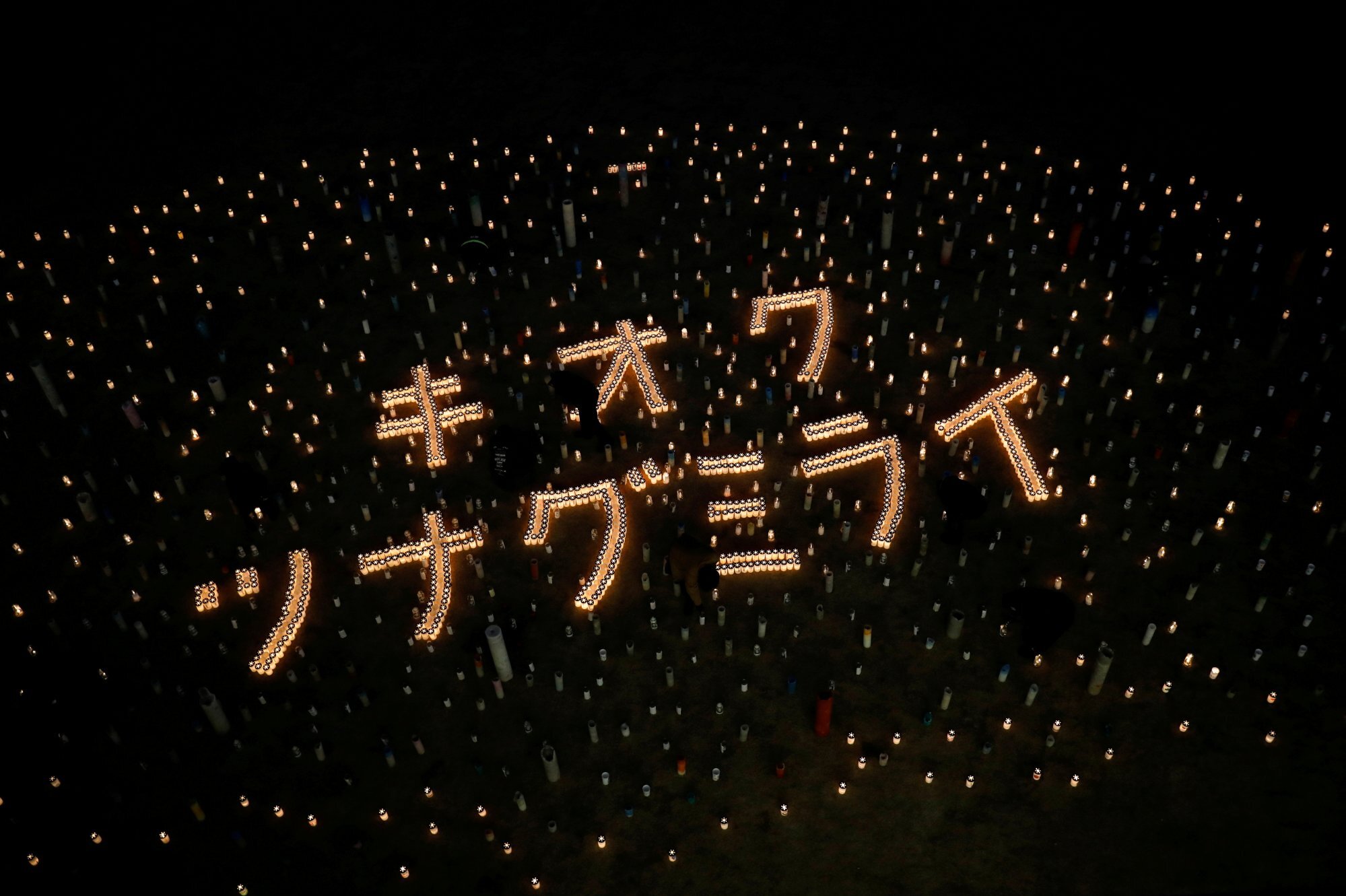
Is Japan downplaying the danger Fukushima water poses to human health?
- Tokyo’s decision to release over a million tons of contaminated water from the nuclear plant into the Pacific has angered China, fishermen and Greenpeace, but Japan insists safety standards are being met
- However, Tokyo’s focus on the nuclide tritium is disingenuous, campaigners say. Why the silence on strontium, rhodium, iodine and ruthenium, they ask
He said the water would be released into the Pacific “while ensuring that safety standards are cleared by a wide margin and firm steps are taken to prevent reputational damage” to the local fisheries industry.

Fishermen are deeply unhappy with the decision, which they have long opposed on the grounds that it will decimate an industry already struggling to overcome perceptions that their catches have not been not safe for human consumption since the 2011 tsunami and earthquake that prompted a meltdown at the nuclear power plant. Most of the water Japan plans to release was used after the meltdown to cool the plant’s reactors. The Japanese government contends that, following treatment, the water is now safe to release but its claims have prompted widespread scepticism.
Hiroshi Kishi, the head of the national federation of fisheries co-operatives, said the decision was “extremely regrettable” and “utterly unacceptable”.
China has ‘concerns’ over plan to release Fukushima water into ocean
“The government has repeatedly acted contrary to the promise it made that it would not take any action without the understanding of all concerned,” said Hideyuki Ban, co-director of the Tokyo-based Citizens’ Nuclear Information Centre. “It is an act that makes us lose confidence in the government’s promise not only for the present but also for the future.”
Countries that already ban imports of seafood and other products from northeast Japan would strengthen those regulations and other countries might introduce similar limits, which would deal another blow to the local fisheries, agriculture and tourism industries, said Ban.
Shaun Burnie, senior nuclear specialist for Greenpeace, said the Japanese government and Tokyo Electric Power Co. (Tepco), the operator of the Fukushima plant, had still not permitted an independent analysis of the radionuclides that are contaminating the water, although a leaked Tepco document had shown that the vast majority of the water stored at the site was contaminated with numerous radioactive elements, including iodine, ruthenium, rhodium, antimony, tellurium, cobalt and strontium-90.

A study by the Kahoko Shinpo newspaper confirmed that levels of iodine-129 and ruthenium-106 exceeded acceptable levels in 45 out of 84 samples collected in 2017. Iodine-129 has a half-life of 15.7 million years and can cause cancer of the thyroid, while ruthenium-106 is produced by nuclear fission and high doses can be toxic or carcinogenic when ingested.
Tepco subsequently confirmed that levels of strontium-90 were more than 100 times above legally permitted levels in nearly 65,000 tons of water that had already been treated and were 20,000 times above safety levels set by the government in several storage tanks at the site.
Burnie said the Japanese government had been “very effective” in focusing debate on the contaminated water on the presence of tritium, which is less harmful than the other nuclides, and made no mention of the other contaminants.
That narrative had been assisted by the Japanese media, which had largely chosen to accept the government’s statements at face value, he said.
China warns Japan over decision to dump Fukushima water
“They have managed to put the focus on tritium, which is still an issue, but 72 per cent of the water that is presently stored in tanks at the site – that is around 800,000 cubic metres of water – still has to go through the ALPS [Advanced Liquid Processing System] procedure because they have not been able to meet the standards required for discharge,” he said.
Data from Tepco on 2,000 cubic metres of water indicated lower levels of strontium, iodine-129 and other contaminants, but these were still well above the “non-detect” levels that were previously promised before the government would release the water.
Burnie said there were still “huge uncertainties” surrounding the Fukushima site. He said his previous experience of discharges from other nuclear plants suggested there would be levels of carbon-14 and technetium, both of which can build up rapidly in life forms. However, neither had been mentioned by Tepco or the Japanese government, he said.
Burnie was also dismissive of the International Atomic Energy Agency’s decision to rubber-stamp the decision, saying, “The IAEA will of course approve the decision and provide scientific justification because its function is to promote nuclear power.
“I have never seen a discharge that the IAEA did not like the look of in all the 60 years the organisation has been around,” he added. “It’s no surprise they have been brought in to provide cover to the Japanese government, but they are only endorsing what the industry wants to do, so they cannot be considered a neutral observer.”
Tepco has previously insisted the water must be disposed of because the site is running short of space for storage tanks, but some critics have said this is disingenuous, as many hectares of surrounding farmland cannot be utilised for generations as it is contaminated by radiation from the accident at the plant, while space within the perimeter of the plant has also been set aside for storing the molten fuel debris once it is recovered from the three reactors that suffered meltdowns.
Burnie said that procedure was not going to happen for many years, and might never be achieved.
“This is the very core of the problem,” he said. “The whole time frame for the removal of the molten fuel – which they suggest will happen between 2040 and 2050 – is sheer fantasy. It’s utter nonsense. And in the meantime, they will be accumulating more than 450,000 tons of water. And they will want to release that as well.”




